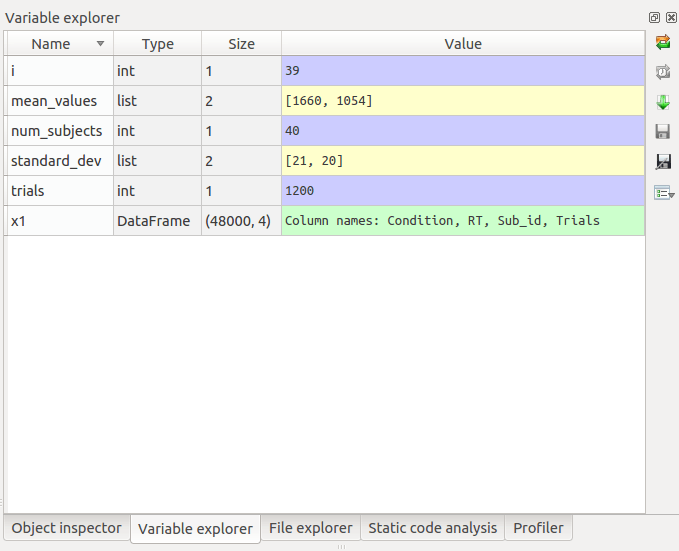

- Best python ide science install#
- Best python ide science code#
- Best python ide science download#
- Best python ide science free#
- Best python ide science mac#
Best python ide science code#
If you want to code in Python, go to Edit/Preferences (or press Ctrl+Comma) and choose Packages. You’re not going to make it far with Atom without extensions. The dedicated community has developed many extensions for Atom that might make coding a real joy.
Best python ide science free#
Best python ide science mac#

vscode with the file settings.json in the project folder. You can customize the settings for a particular project by adding the folder. If you click File/Preferences/Settings (or just Ctrl+Comma), you’ll be able to adjust settings for the environment in general, as well as for Python.
Best python ide science install#
Of course, you might want to install other extensions related to Markdown, web development, or C/C++, etc. Microsoft’s Python extension provides linting, auto-completion, and working with interactive Python. Type python and you’ll get the extensions available for installation. Go to File/Preferences/Extensions (or click on the square icon on the top left or just click Ctrl+Shift+X). If you want to use Python in VS Code, you’ll probably need to install Microsoft’s Python extension. VS Code is free and open-source, even for commercial purposes.VS Code has integrated terminal, source-control and debugging support.VS Code is mature and has a wide and dedicated community.VS Code is a general-purpose IDE that supports Python, C/C++, C#, JavaScript, HTML, CSS, Markdown with previews, and many more languages.VS Code is available for Linux, Windows, and Mac OS.VS Code was created by Microsoft in 2015.The main characteristics of the VS Code are: Don’t mix it up with its older and bigger brother - Visual Studio.

Visual Studio Code (or VS Code) is a free, open-source, and general-purpose IDE, or to be more precise - code editor. This article describes several widely-used Python IDEs, suitable for data science, machine learning, web development, and so on. They usually support linting, auto-completion, and choosing a Python environment for each project. Most well-known IDEs have support for Python, one of the most popular programming languages. There is a number of interesting IDEs, with all kind of tools that might help you code faster and avoid some errors. So, you can easily mix different tools at the same time depending on your needs (writing documentation, writing scientific stuff, code, presentation).Choosing an integrated development environment (IDE) that suits your needs is often a non-trivial task. Remember that all the IPython front ends (IPython console, IPython QtConsole, IPython Notebook, SublimeREPL, etc.) can be connected to the same IPython core instance. IPython Qt console (inline plotting, completion, saved sessions, saved datasets, etc.) Sublime Text 3 (lightweight code editor) with the SublimeREPL, SublimeIPythonNotebook If you don't like to work in the browser, I suggest my setup which is:Īnaconda (python distribution with science packages) Take a look at the multiple examples already out there:
Best python ide science download#
Anyone who can download the notebook will run the same exact experiments. Think of it as the future of research, where your results are interactive. You can also run an interactive presentation directly within the notebook, which is a nice way to show results. Your IPython session is embedded and directly transferable to others, easily versionable. Spyder directly runs an IPython session which can be edited later on with other tools.Īnother one IPython notebook (now known as Jupyter) which is a new and very powerful tool especially if you want to document your code with Latex code. The other IDE are nicers but they lack the tools for inspecting datasets. It is a improved python interpreter, with batteries includes (indentation, completion, history, HPC, etc.).įor you IDE, Matlab-like, you have basically one choice: Spyder (which as a basic git support). I strongly suggest that you install a complete scientific python distribution such as Anaconda or Enthought Python which contains all the packages you need for science (numpy, scipy, matplotlib, numba, pandas, etc.)įor scientific computing, the de-facto standard is to use IPython instead of python.


 0 kommentar(er)
0 kommentar(er)
